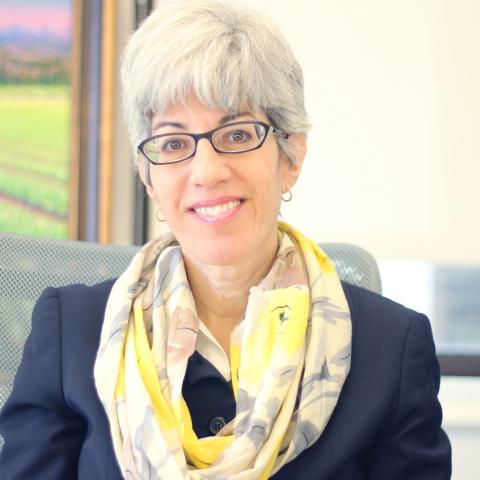Community health centers (CHCs) provide essential prenatal, birth, postpartum, and family planning care for the nation’s most underserved communities. By mission and by law, CHCs must provide women’s health services to medically underserved areas and populations, including to low-income families, rural families, and those living in maternity care deserts. In 2022, CHCs served approximately 8 million women of reproductive age, or about one of eight women ages 15 to 44. CHCs care for 40 percent of all low-income women; nearly two-thirds of CHC patients identify as people of color. CHCs play a vital role in addressing health inequities and improving outcomes for low-income women and women of color.
Increasingly, however, CHCs are challenged by numerous stressors related to federal funding, the organization of the health care system generally, and issues specific to maternal and reproductive health services, including:
- The Supreme Court decision in Dobbs v. Jackson Women’s Health Organization. Though CHCs are prohibited by federal funding restriction from providing abortion care services, the Dobbs decision has had serious effects, driving increased demand for contraceptive and maternity care as women’s health providers leave abortion-ban states or decline training and practice opportunities in those states.
- Closures of hospitals and birthing units. As of 2023, one-third of U.S. counties had little or no access to maternity care. As maternity units close, providers leave, access continues to decrease, and maternity deserts become entrenched, CHCs are absorbing more prenatal and postpartum patients, including many with higher risks.
- Policy changes that threaten CHCs’ razor-thin financial margins. An estimated 17 million Medicaid enrollees have already lost coverage because of Medicaid redetermination processes reinstated in 2023, known as “unwinding.” Nearly half of all CHC patients are covered by Medicaid; consequently, Medicaid unwinding is expected to reduce CHC revenue by approximately $2.8 billion as patients lose coverage, jeopardizing health center capacity.
The Geiger Gibson Program in Community Health at George Washington University is studying the compounding impact of these stressors on CHCs’ ability to provide high-quality women’s health services to the nation’s most underserved communities. To date, the team has conducted focus groups with staff from CHCs and state primary care associations in 15 states. This included 11 states that restricted abortion access after the Supreme Court’s ruling and four adjacent states. From this work, the team identified the following three findings:
1) An already stretched CHC workforce is approaching a crisis. CHCs reported that they have always struggled to recruit and retain providers because of competition with hospitals and larger health care systems. However, CHCs in states that ban abortion expressed concern about increasing difficulties following the Dobbs decision and are anticipating many providers will avoid states with restrictive policies. CHC clinicians in several states that have banned abortion expressed frustration about new restrictions that limit their ability to follow medical guidelines and to provide needed referrals and timely care. CHC providers described “feeling under attack.” One described the stress of working in a state where “Black and Brown bodies are continuously harmed.”
Recruiting and retaining ob-gyns and nurses is a particular concern, as are the diminishing number of specialists available for consultation and the dearth of places to refer high-risk pregnancies. Many predict a workforce crisis. States that ban abortion already had the deepest CHC provider shortages prior to the Dobbs decision; further declines in the provider base will only deepen maternal health inequities.
2) Increases in demand amidst capacity limitations. Nearly all CHCs participating in the focus groups reported increases in demand for contraception, prenatal care and other maternity services, and maternal mental health services. Among states that ban abortion, CHC providers described greater demand for “long-acting and reversible contraception, sterilization, and vasectomies,” an increase in maternity patients, “more patients continuing their pregnancies,” and “greater demand for prenatal and delivery services,” as well as “increased reports of postpartum depression.” While these increases in demand cannot be causally linked to Dobbs, CHC data and provider reports show upticks in demand since the June 2022 decision.
3) Loss of essential revenue. All CHCs and state primary care associations reported that the Medicaid unwinding is reducing CHC operating revenue, which potentially compromises their ability to provide services. In a survey on how the unwinding is affecting health centers and their patients, nearly nine of 10 CHCs reported that patients have been disenrolled because of the unwinding.
Policy Opportunities
As stressors stack up, states and the federal government have the opportunity — and indeed the obligation — to advance maternal health equity by supporting CHCs as an essential maternity safety net for the nation’s most underserved populations. They can use the following policy levers to do so:
- More robust and predictable funding. CHC funding has been inconsistent and unpredictable. The Centers for Medicare and Medicaid Services and the Health Resources and Services Administration, which oversee the Health Center Program, have yet to find a payment model to ensure that CHCs are able to consistently provide robust family planning and maternity care. Furthermore, with Medicaid coverage extensions that extend postpartum coverage from 60 days to 12 months postpartum now adopted in 47 states, CHCs may need an enhanced payment structure to better provide for the needs of postpartum patients.
- Support for essential workforce. CHCs employ a diverse team of professionals — including midwives, doulas, community health workers, and care coordinators — to serve patients with often complex medical and social needs. But Medicaid payment models are often not aligned to support enhanced team-based care, and services provided by doulas and community health workers may not be reimbursable under Medicaid.
- Increased support to reduce the negative impact of Medicaid unwinding. States must support CHCs in their efforts to help patients navigate the Medicaid redetermination process through education, assistance with applications, on-site reenrollment, or help enrolling in other sources of coverage.
As the availability of other services declines and the workforce erodes, the importance of health centers is magnified. However, CHCs need additional resources to reach patients in maternity care deserts and require greater and more predictable funding support to meet the increasing demand for a wider scope of reproductive health services.
Community health centers are optimally situated to support the growing demand for family planning and maternity care in medically underserved areas. Urgent action is needed to improve outcomes and survival rates for mothers and babies, making investments in CHCs essential. Without more funding and resources to support essential health center services, gaps in reproductive care are likely to widen, unmet need will increase, and the crisis in maternity care will escalate.




